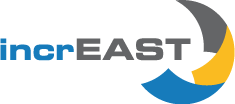

The efforts of the scientific community were mainly directed to solving arising problems and preserve as much of the inherited from the former USSR R&D; potential as possible. Thus, it can be stated that until the late 1990s, the matter of S&T; policy-making and priority setting was not a major concern of the political actors in Armenia. During those years the RTD sector was existing or better say 'surviving' in the country by itself with very weak links and hardly any contribution to development of national economy.
The only major step in S&T; policy during the early 1990s, was the government decision to implement thematic (project based) financing of science.
There were also several unsuccessful attempts of creating a science and technology council subordinated either to the president or the prime minister.
In December 2000, the Armenian Parliament adopted the 'Law on Scientific and Technological Activity' aiming at regulating interrelations between R&D; performers, state bodies, and R&D; outcome consumers, as well as outlining general principles of formation and implementation of state policy in the field of S&T.; The law prescribes the Ministry of Education and Science (MES) as state authorised body to develop and coordinate S&T; policy-making.
By government resolution as of September 2006, the Ministry of Trade and Economic Development (currently: the Ministry of Economy) was recognised as authorised body responsible for development and implementation of innovation policy, in co-operation and coordination with other concerned ministries and organisations. The aforementioned situation was indicative of fragmented character of policy-making in S&T; and innovation, and poor interlink and cooperation between these organisations.
To improve the policy-making and better coordination in the field of S&T;, in October 2007 the government made a decision on creation of the State Committee of Science empowered to carry out integrated S&T; policy in the country. This structure is subordinated to the Ministry of Education and Science, but with wider power of independent activity. The Committee is also responsible for development and implementation of research programmes in the country through three main financing mechanisms: thematic (project based) financing, basic financing and targeted research projects.
During this period several other governmental acts and decisions have been adopted directed to regulation of S&T; and innovation policy in the country.
In May 2001, the government approved the concept on development of information technology industry in Armenia. It emphasises the existence of adequate potential in the country for development of IT sector, and need for further improvement of infrastructure and legislation supporting development of IT industry.
The law on the National Academy of Sciences of Armenia (NAS RA) was adopted by the parliament on 14 April 2011, which assigned a status of highest self-governing state organisation with special status to the Academy empowered to coordinate and carry out basic and applied research directed to the creation of a knowledge-based economy, and social and cultural development of the country. This Law gave more power to the Academy and its research institutes in carrying out business activities towards the commercialisation of R&D; outcomes and the creation of spin-offs.
In May 2010, the government adopted the 'Strategy on Development of Science in Armenia', which outlined the state policy towards development of science in 2011-2020.
Based on this strategy, the Action Plan 2011-2015 was approved by the government in 2011 on the development of science in Armenia which incorporates the following targets for the stated period as follows:
One of the main positive aspects in the latest adopted policy documents is the existence of quantitative targets to measure the success of implementation of envisaged measures.
In December 2014, the Government approved new science and technology development priorities for 2015-2019 which are stated to be:
However, the government decision doesn’t specify additional measures or mechanisms to channel additional support or funds for development of priority research areas1.
Besides of above mentioned documents in March 2011 the Government approved the Program to Promote the Development of Social Sciences for 2011-2015 and in January 2012 the Strategy on Development of Armenology for 2012-2025. The total number of Government’s Resolutions approved during 2008-2014 and concerned to R&D; is about 20.
The new Statute of the National Academy of Sciences of Armenia was approved by the government in May 2011, based on the Law on the National Academy of Sciences of Armenia, allowing the Academy to carry out wider business activities towards the commercialisation of R&D; outcomes and the creation of spin-offs.
In addition to horizontal innovation and science policies, the Government strategy includes focusing support schemes on selected industries. Within this context, since 2011 the State Committee of Science has started a programme inviting private sector participation on a co-financing basis in research projects targeting applied results. Within this programme projects have been funded in the field of pharmaceutics, medicine and biotechnology, agriculture modernisation and machine building, electronics, engineering, chemistry and ICT.
During the last years a few private initiatives have also been launched, e.g. Technology Transfer Association, Viasphere Technopark and IT park in Yerevan, etc.
Sources: NAS RA
Last update: February 2016
[PDF - 194.1 kB]

(general information - research structure - research policies - international cooperation) (URL: https://increast.eu/_media/Armenia_Country_Report_EN_Feb2016_final.pdf)